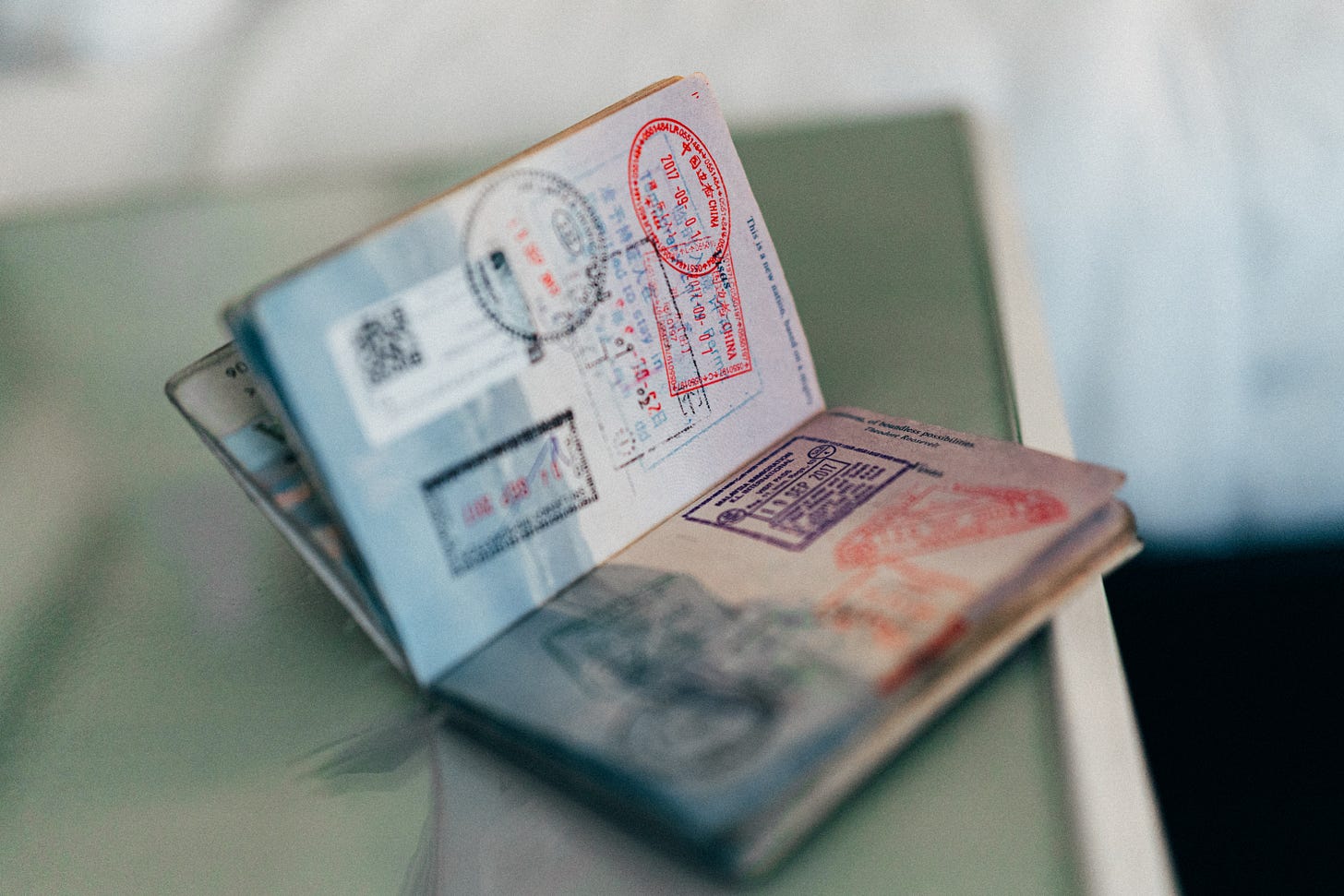J-1 Research Fellows: U.S. immigration pathways [A Primer]
This post provides an overview of issues faced by research fellows in medicine seeking U.S. visa options
It is estimated that 25% of all physicians practicing in the United States are International Medical Graduates (IMGs). Many of them come initially to the United States on J-1 visas. The purpose of this post is to discuss, at a high level, some of the issues faced by physicians on J-1 visas, particularly those who come to the United States initially on research-based J-1 visas.
Research J-1 versus Clinical J-1
Physicians who comes to the United States on a J-1 visa will generally come initially on a research J-1, or a clinical J-1. If a physician comes to the United States on a research J-1, then he or she will have very limited patient care and often he or she will be working at an Academic Health Center. Lists of some of the Academic Health Centers in the United States can be found here and here.
Physicians who come to the United States on research J-1 visas may be subject to the two-year home residence requirement.
Note: Not all physicians who come on research J-1s are subject to the two-year rule. It is country-specific.
Whereas all clinical J-1s are subject to the two-year rule, only certain physicians of certain nationalities are subject to the two-year rule for research J-1s. Whether you are subject to the two-year rule is something that needs to be considered carefully. It is often noted on the DS-2019 form and/or the J-1 visa itself.
It is important to understand that sometimes the consular officer who issued the J-1 visa and stamped the DS-2019 made a mistake. These issues should be studied carefully.
Determining whether someone is subject to the two-year rule based on a research J-1 requires consideration of something called the Skills List. The U.S. Department of State provides information on the Skills List here.
In addition to the Skills List, a small subset of research J-1s may have received government funding (either from their home country or the U.S.) for their J-1 program and these folks who got government funding also generally face the two-year home residence requirement.
If a research J-1 visa holder is subject to the two-year rule, then he or she generally cannot get an H-1B or a green card unless either (i) he/she returns to their country of last residence for 24 months, or (ii) he/she gets a waiver of the two-year rule.
In many instances, getting the waiver is not necessarily difficult for research J-1s, whereas getting a waiver for a clinical J-1 can be quite challenging.
But one thing to keep in mind in summer 2022 that even the ‘easy waivers’ for research J-1s, known as “No Objection” waivers, can be very slow to be approved by the U.S. government. The U.S. government processing times are extremely slow right now although hopefully in the coming months things will improve. No Objection waivers are the ‘easy waivers’ based on the Skills List.
Note that an attorney is NOT necessarily required to obtain a J-1 waiver based on the Skills List. The U.S. Department of State provides a lot of guidance, here.
Timing of J-1 Waivers for Research J-1s
If a physician comes to the United States on a research J-1 and decides that he or she wants to stay in the United States for further training and/or other opportunities, and he or she decides to pursue a J-1 waiver, then one thing that is important to map out is the timing of the J-1 waiver.
There are a variety of factors when considering the timing of a J-1 waiver. Basically after you apply for the waiver, you cannot get another DS-2019 so you don’t want to apply for the waiver too soon. But if you apply too late, then you might miss the opportunity you want to pursue. There are various fact patterns that arise and it is important to analyze your specific situation very carefully.
Whether you are married and your spouse has J-2 work authorization and whether you want to travel internationally are some of the issues that often arise.
EB-2 NIW and EB-1A (Self-Petition Green Card Options)
One of the strategies used successfully by many research J-1s is to do research for a couple years and then pursue a clinical residency and go into clinical medical practice in the United States.
For those individuals who are using a research J-1 visa for research and want to transition to a clinical residency, it can often be very useful to seek a green card BEFORE entering the clinical residency. Obtaining a green card BEFORE entering a clinical residency will provide various positive benefits like making it easier to get accepted into a residency program but particularly offering more options and flexibility post-clinical residency/fellowship.
Physicians on research J-1s are generally not eligible for any kind of green card sponsorship by their research program institution. To obtain a green card, they must self-petition.
Because of some technical issues in U.S. immigration law, pursuing a green card BEFORE entering clinical residency is often easier for people who are NOT born in India or China. People who are born in India or China are subject to special backlogs and so for them to obtain a green card BEFORE entering clinical residency they must clear a very high hurdle and be approved for EB-1A. EB-1A is only available to people who can document that they are extraordinary in their field and often a research J-1 is not so prominent as to qualify for EB-1A.
But for research J-1s who were born in any other country (other than India or China), it is often possible to obtain a green card through the EB-2 NIW program based on the administrative law standard set out in Matter of Dhanasar. I have written a primer on EB-2 NIW here.
The issue that often is faced by research J-1s not born in India or China is whether they want to stay in research J-1 status long enough to obtain a green card first, or would they rather proceed as quickly as possible into a clinical residency.
Often, for those who don’t want to wait, then they will change from a research J-1 to a clinical J-1. They will take ‘one fork’ in the road.
By taking a clinical J-1, they can often enter a clinical residency faster but they will be subject to a lot of complexity after they complete their residency/fellowship.
If they are willing to wait and get their green card first, before starting the clinical residency, then they will have maximum flexibility in pursuing their options both for residency and post-residency/fellowship.
It is a critical fork in the road for IMGs and I have consistently seen over the past 10+ years of working with IMGs the benefits to IMGs who were willing to wait and get their green card first. Frankly, after working with hundreds of IMGs, I have not met one who said, “I’m glad I did the clinical J-1 as soon as possible.” This relates to the complexity and limitations of job options post residency if you are on a clinical J-1.
USCIS is rolling out premium processing for EB-2 NIW cases, which means you will soon be able to pay USCIS an additional $2,500.00 for a decision on an EB-2 NIW case in 45 days. Traditional processing times were 6+ months so 45 days is pretty good. The availability of premium processing will make EB-2 NIW even more attractive to research J-1s.
H-1Bs and O-1s
Separate from J-1s and the self-petition green card routes (EB-2 NIW and EB-1A), there are temporary work visas sponsored by employers that are potentially available to IMGs. Some people do clinical residencies using an H-1B visa, however, to obtain an H-1B visa the physician must have passed all 3 stages of the USMLE prior to the H-1B petition filing, and the physician must have resolved any J-1 waiver/two-year home residence requirement.
For clinical residencies, the number of programs offering H-1Bs for their residents is a fraction of the number of programs available overall. Many more residency programs sponsor clinical J-1s versus H-1Bs.
The O-1 visa is a temporary work visa sponsored by an employer. It is not often used for a clinical residency/fellow but it can potentially be used in special situations.
The most common use for the O-1 visa for a physician is for a physician who did a clinical J-1 residency and/or fellowship and wants to continue to work in the United States but is subject to the two-year home residence requirement.
To qualify for an O-1, you also have to document you are ‘extraordinary’ but the traditional standard for O-1 is lower than EB-1A.
Choices, Timing, and Planning
The U.S. immigration issues faced by IMGs are varied. The law is complex and of course individual physicians have different personal and professional goals.
Physicians who are married have the additional complexity of mapping out their own careers but also their spouse’s.
Research J-1s may be tempted to jump as quickly as possible into clinical residencies knowing the clinical residencies and fellowships are hard to get and they don’t want to delay their careers but in many circumstances being strategic and obtaining a green card first through a self-petition green card option will result in a better outcome.
###
I hope this post has been useful to identify some of the issues faced by IMGs in J-1 visa status. With careful planning, IMGs can have incredible opportunities, careers, and lives in the United States; but in general the sooner the immigration issues and visa complexity are behind them, the happier they are.







